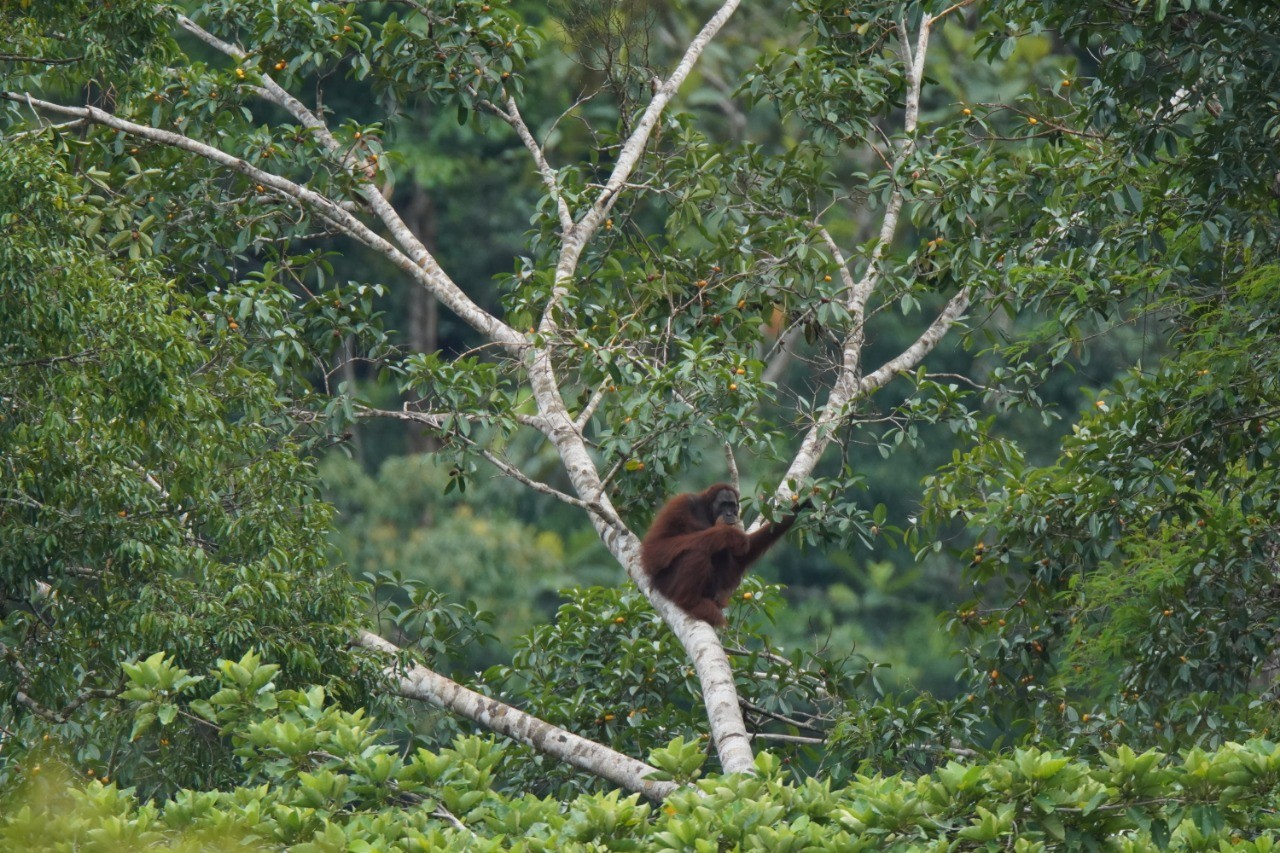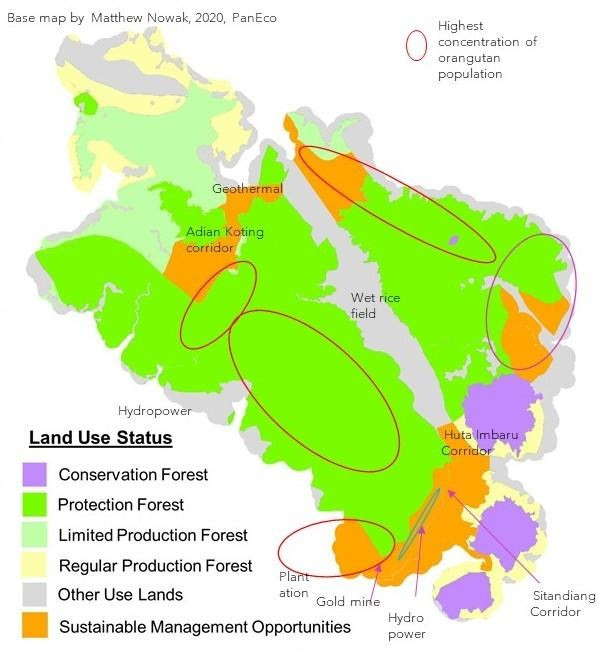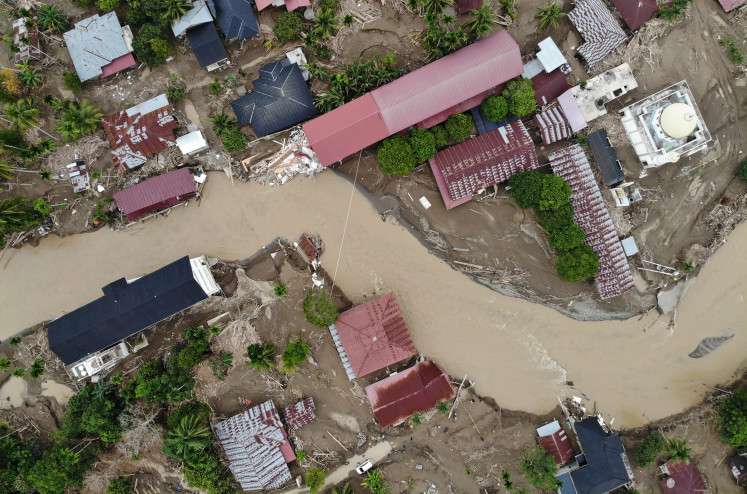Popular Reads
Top Results
Can't find what you're looking for?
View all search resultsPopular Reads
Top Results
Can't find what you're looking for?
View all search resultsCollaborative sustainable management of other use areas to protect Tapanuli orangutan in Batang Toru ecosystem
The fact that the majority of the orangutan population is already within the protection forest is a big relief. The challenge is how to protect orangutan outside the protected and conservation areas.
Change text size
Gift Premium Articles
to Anyone
B
atang Toru ecosystem has come under the national and international spotlight in the last few years, due to its unique character and valuable biodiversity, especially the newly discovered Tapanuli orangutan.
Recently, some environmental activists have been calling for more studies on the ecosystem, for strategic environment study and an environment audit on the ecosystem’s carrying capacity. They also demand a halt to the hydropower project there.
Conducting more studies looks like opening Pandora's box. It will reveal and provide opportunities for interests other than the necessity to protect the orangutan. In reality, this is not a scientific, but a political process that goes beyond the control of both NGOs and scientists, especially scientists from overseas.
The outcome is unpredictable and the level of uncertainty is high, since the regents and local councilors tend to resist any changes to the existing land status that they fought so hard for in the past. It is more obtainable to work within the existing land title and call for sustainable management of these areas, with the Tapanuli orangutan as the umbrella species. It is more effective and can provide an immediate solution to the protection of the primate.
Implementation of sustainable management in zones allocated for other land uses (APL) in the Batang Toru ecosystem in North Sumatra can be the answer to maintaining a long-term viable population of this critically endangered species. The sustainable development principles will treat economic, environmental and social dimensions in an equilibrium, so that there is no dichotomy between conservation and economy.
On July 26, 2019, I wrote in this newspaper that the Tapanuli orangutan could coexist with the run-of-river hydropower plant, against those who insist the construction must stop. I want to re-emphasize that position, with better understanding of the land use system, more studies coming out recently (Rahman et.al, 2019) and Kuswanda (2020), as well as new findings from a more detailed study recently conducted by the National University Center for Sustainable Environment and Resource Management (Prasetyo and Prakosa, 2020) on the project site, and consultations with orangutan experts of PanEco and YEL Foundation.
My argument came from the fact that the majority of the Batang Toru forests (around 71 percent) have been protected under protection forest status and around 10 percent are under nature conservation status.
A comparison between the land status and Tapanuli orangutan habitat suitability distribution by Rahman, et.al, (2019) shows that the majority of the orangutan population is found within the protected and conservation forests.
Orangutans inhabiting APL are mostly in low to moderate density. The APL are managed by the local governments of North, Central and South Tapanuli and are intended for economic purposes. The Batang Toru hydropower project is located in this area, not in the highest density of orangutan population, as claimed by Serge Wich. Other large-scale economic activities are also found in the APL.
The fact that the majority of the orangutan population is already within the protection forest is a big relief. The challenge is how to protect orangutan outside the protected and conservation areas.
The focus of this solution is to guarantee the safety of orangutans and the integrity of forest cover in all land statuses and to create wildlife corridors to allow genetic flow of isolated populations to a larger population. Public education followed by law enforcement to prevent killing and hunting of orangutans, as well as illegal logging prevention, is a must and is a prerequisite.
At the same time, orangutan habitat suitability within the APL status should be identified and delineated. Any projects in these areas have to protect the habitat and restore it whenever possible for temporary disturbed ones, and finding offset for habitats that are permanently disturbed, and restore areas that are not suitable as orangutan habitat into ones that are suitable.
As for the misleading information about the hydropower project, especially coming from IUCN Fact Check created by Serge Wich recently, I have found the fact check has a fundamental problem because it was based on wrong and outdated information. PT NSHE has done more work and studies since construction started, and new data and information has changed some of the previous position.
Ian Singleton last February stated during a workshop in Medan, in which Serge Wich refused to participate and called for a boycott of, that the project did not infringe the connectivity of orangutans from the Sibual-Buali population to the larger population in the west block and with the planned mitigation program, the impacts will be minimal.
The critical habitat within its area of influence (AOI) has been identified, the permanent disturbance of orangutan habitat is 84 hectares, and temporary disturbance and to be restored is 189 ha, and priority area to be protected has been delineated. The permanent disturbance is going to be offset, and the recommendation is to establish a wildlife corridor in Sitandiang.
There has been daily orangutan monitoring with the involvement of local communities, trained and supervised by orangutan experts. The company collaborates with scientists, NGOs, local governments and conservation agencies at all levels.
Other companies need to follow this example. The bar for best practices should be established. I call for all concerned parties to collaborate and achieve this objective as soon as possible.
***
The writer has advised PT NSHE’s president. The views expressed are her own.
Editor's note: This opinion piece has been updated to clarify the writer's position.











